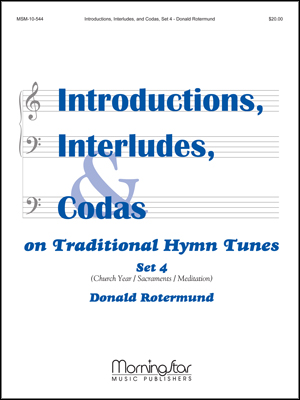- |
User Links
266
The Church of Christ Cannot Be Bound
Hymn Information
- First Line
- The church of Christ cannot be bound
- Author
- Adam M. L. Tice, b. 1979
- Tune Name
- ST. PETER
- Composer
- Alexander R. Reinagle (1836)
- Topic
- The Church · Homelessness · Mercy · Missional · Servants of God
Copyright Information
- Text Copyright
- © 2005 GIA Publications, Inc.
- Tune Copyright
- Public Domain
- Reprint/Projection Information
- Words: Permitted with a license from OneLicense.net. If you do not own this license, please contact the copyright holder for permission.
- Music: The Music is in the Public Domain; you do not need permission to project or reprint the Music.
Scripture References
Further Reflections on Scripture References
See such passages as these for the scope of the church and its focus/essence: Matthew 25:31-46, John 13:1-17, Acts 10:37-42, Ephesians 2:11-22, and James 2:1-18.
266
The Church of Christ Cannot Be Bound
Introductory/Framing Text
Adam Tice says about his hymn:
"I was inspired by a Menno Simons quotation that is quite well-known within the Mennonite world:
'True evangelical faith cannot lie dormant. It clothes the naked, it feeds the hungry, it comforts the sorrowful, it shelters the destitute, and it serves those who harm it. It binds up that which is wounded. It has become all things to all people.' (Why I Do Not Cease Teaching and Writing, 1539) It also references the 9th c. Latin quotation, Ubi caritas et amor, Deus ibi est—Where there are charity and love, God is there.
The text won the 2005 Macalester-Plymouth hymn writing competition.
—
Adam M. L. Tice (http://www.adammltice.com/bio.html)
266
The Church of Christ Cannot Be Bound
Hymn Story/Background
Composed by Alexander R. Reinagle, ST. PETER was published as a setting for Psalm 118 in Reinagle's Psalm Tunes for the Voice and Pianoforte (c. 1836). The tune first appeared with Newton's text in Hymns Ancient and Modern (1861). The tune was named after St. Peter-in-the-East, the church in Oxford, England, where Reinagle was organist from 1822-1853.
—
Bert Polman
Author Information
Adam M. L. Tice (b. 1979) was born in the mountains of western Pennsylvania, and grew up in Alabama, Oregon, and Indiana. After graduating from high school in Elkhart, Indiana, Adam went to nearby Goshen College, a Mennonite liberal arts school. He majored in music with an emphasis on composition and completed a minor in Bible and religion, graduating in 2002. He began working as a church musician and choir director while still in college.
Adam took his first course at the Associated Mennonite Biblical Seminary in the fall of 2003, which led to the writing of his initial hymn text. Four years later (including a year-long interlude as a full time marionette puppeteer) Adam graduated with a Master of the Arts in Christian Formation with an emphasis on worship.
In 2004 Adam was named a Lovelace Scholar by the Hymn Society of the United States and Canada. From 2007 to 2010 he served as a member of the Society's Executive Committee.
Adam served as Associate Pastor of Hyattsville Mennonite Church in Hyattsville, Maryland, (just outside of Washington, DC) from 2007 to 2012. He now lives with his family in Goshen, Indiana.
—
Adam M. L. Tice (http://www.adammltice.com/bio.html)
Composer Information
Little is known of Alexander R. Reinagle’s (b. Brighton, Sussex, England, 1799; d. Kidlington, Oxfordshire, England, 1877) early life. Of Austrian descent, he came from a family of musicians and became a well-known organ teacher. A writer of teaching manuals for string instruments, Reinagle also compiled two books of hymn tunes, the 1836 collection and A Collection of Psalm and Hymn Tunes (1840). He also composed a piano sonata and some church music.
—
Bert Polman
Suggestions or corrections? Contact us


 My Starred Hymns
My Starred Hymns






